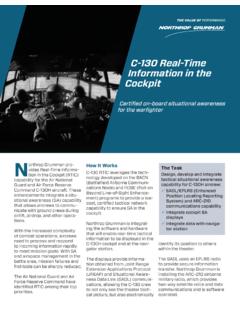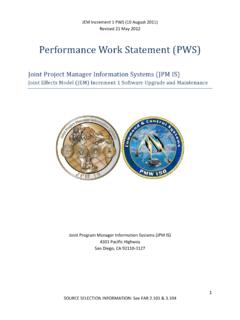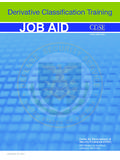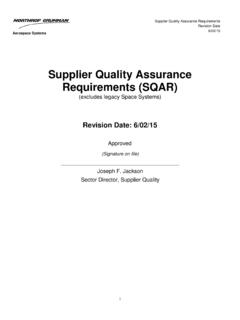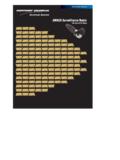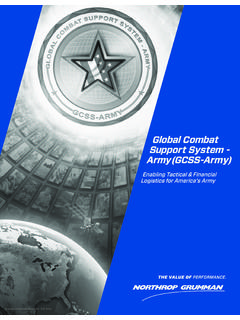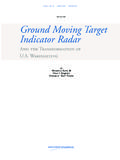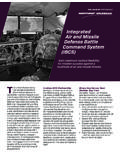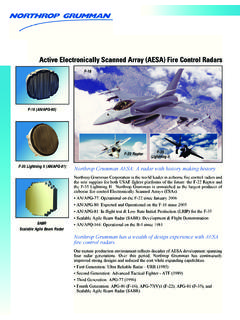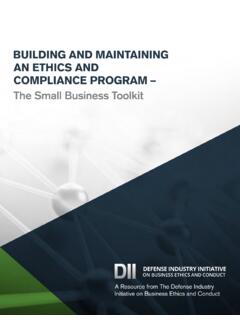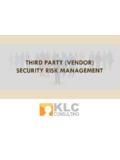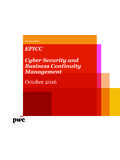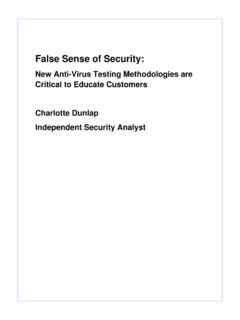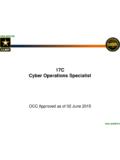Transcription of ANNUAL SECURITY REFRESHER TRAINING - Northrop …
1 DoD 6/2/2017 Page 1 of 13 ANNUAL SECURITY REFRESHER TRAINING This ANNUAL REFRESHER TRAINING is provided to you as a reminder or your obligations and responsibilities as a cleared individual. INTRODUCTION Upon completion of this module you should be able to: Reaffirm obligations that you agreed to when you received your SECURITY clearance or access. Describe types of government information, implement safeguards, and report data spillage. Be alert to and appropriately report potential threats by adversaries, insiders, and other harms. Carry out your responsibilities when escorting visitors. Understand your personal reporting responsibilities and obligations under the United States espionage and sabotage acts.
2 MEETING OUR SECURITY COMMITMENTS Northrop Grumman is accredited to perform classified work. You have been granted a SECURITY clearance or access based on the company s requirements and customer s determination. Customers perform comprehensive SECURITY reviews to assess our performance of SECURITY obligations. Violations of our obligations could place the company and cleared individual at risk of losing the eligibility to perform this type of work. YOUR OBLIGATION LEGAL AND BINDING When receiving your clearance or access you confirmed by signing a non-disclosure agreement that you understand the consequences of violating your cleared obligations and agreed to: Accept a life-long obligation to protect classified information. Submit for pre-publication review any writing intended for public distribution.
3 Avoid unauthorized disclosure, retention, or negligent handling of sensitive government information and materials. While there are a number of statutes mentioned in this agreement, violations of the statutes of Title 18 or Title 50 of the United States code can lead to prison sentences, fines, or both. DoD 6/2/2017 Page 2 of 13 TYPES OF GOVERNMENT INFORMATION There are two categories of government information that you might handle in your work unclassified and classified. Unclassified government material is material that does not require a SECURITY clearance. However, it can still be very sensitive information and require special handling. Examples of this type of data are For Official Use Only (FOUO) and Controlled Unclassified Information (CUI).
4 These types of information are not for public disclosure. Unclassified material that is co-mingled with classified material must be marked. The statement of work provided with your tasking or the overall contract document will provide specific instructions on the handling of these types of materials. For further guidance, consult your program manager, supervisor, or contracting officer. CLASSIFIED GOVERNMENT INFORMATION Classified government material requires the person handling or given knowledge of the information have the required clearance or access for that information and a need-to-know. When classified material is generated, it carries one of the following designations: Originally classified is material classified by a government official or so designated in writing by the President of the United States.
5 Derivatively classified material is any material subsequently derived by a source document(s) or from guidance provided by a SECURITY classification guide or DD254 (a government directive form). As a cleared contractor employee creating classified materials, you are a derivative classifier. You are responsible for reviewing the SECURITY classification guides and directives associated with your program. Classification guides are available from your SECURITY office. If you are unsure how to interpret the classification guide, consult your supervisor or manager. It is your responsibility to determine appropriate classification and proper marking. PROTECTING CLASSIFIED MATERIALS Always maintain direct control of classified information.
6 Provide access to classified material only to those with appropriate clearance and with a need-to-know. Review your holdings annually, retain for only as long as needed, and properly disposition them when no longer needed. Possessing a SECURITY clearance is not adequate justification for accessing classified information. Understand that classified information reported in the press or available on the Internet is still DoD 6/2/2017 Page 3 of 13 classified. Never confirm, deny, or comment on classified information. END OF DAY SECURITY CHECKS Conduct an end-of-the-day SECURITY check for yourself and your work area to ensure that: Systems are shut down, locked and password protected. Material is properly stored. Containers and areas are secured.
7 HOSTING CLASSIFIED MEETINGS At the start of a classified meeting, set and announce the level of the meeting. Prior to beginning any classified discussion or disseminating any classified information, the meeting host is responsible to: Ensure the location is secure and discussions cannot be overheard. Attendees have the appropriate clearance and access levels. Attendees have need-to-know. Electronic devices are removed or powered off, depending upon procedures. Remember, never process classified information on an unclassified computer system. The meeting host can coordinate with SECURITY if a classified computer is required. We are all responsible for SECURITY take actions immediately if you notice that someone has an electronic device or if you can hear conversations from another meeting room, indicating that your meeting conversations may also be overheard.
8 CODE BLUE AWARENESS AND REPORTING The company maintains the required high level of protection for classified information provided by or developed for government agencies. We must all be aware of the potential for classified information being inappropriately introduced into an unauthorized information system(s). These are data spills. Northrop Grumman refers to a data spill as Code Blue. Immediately report a suspected Code Blue to your SECURITY point of contact. If you are not able to reach a SECURITY point of contact, report the potential Code Blue directly to the cyber SECURITY Operations Center (CSOC) at 877-615-3535. When reporting a Code Blue, do not disclose possible classified information over unsecure channels.
9 Follow these instructions to prevent further proliferation: Do not delete or forward any information. DoD 6/2/2017 Page 4 of 13 Do not attempt any cleanup of the information on your own. Disconnect the computer, and do not use the affected system until you are told that it is safe to do so. References: CTM J302 Protection of Classified Information During Code Blue Events Code Blue website INSIDER THREAT Insider threat is the term used for the potential harm posed when an individual intentionally or unwittingly uses or exceeds access to negatively affect information or systems, or compromises our government customer s mission. Insiders committing illegal acts and unauthorized disclosure can negatively affect national SECURITY and industry in many ways.
10 These acts can result in: Loss of technological advantage Compromise of classified, export-controlled, or proprietary information Economic loss; and Even physical harm or loss of life. These types of threats from trusted insiders are not new, the increasing numbers of those with access to data and the ease with which information can be transmitted or stored can make illegal access and compromise easier. A recent DSS brochure on insider threats cited that in the 11 most recent cases, 90% used computers while conducting espionage and two-thirds initiated the contact via the Internet. LOOK FOR AND REPORT INDICATORS OF POSSIBLE INSIDER THREAT We must all be on the alert for behaviors that might be indicators of an insider threat.
